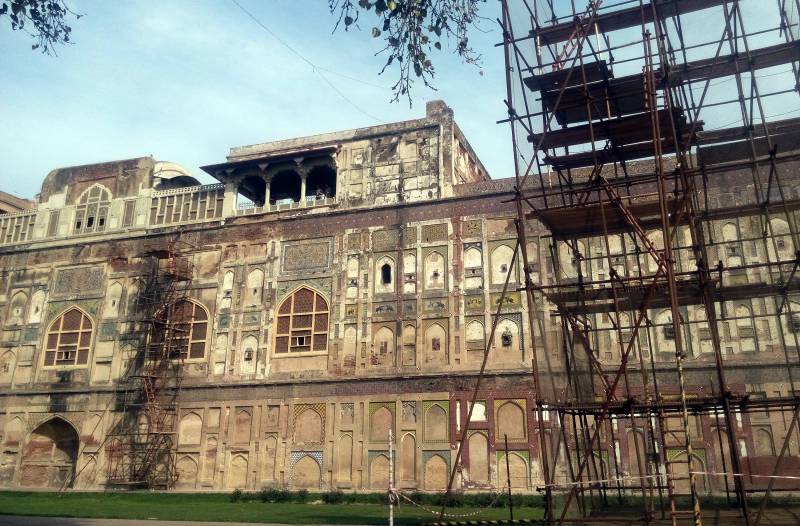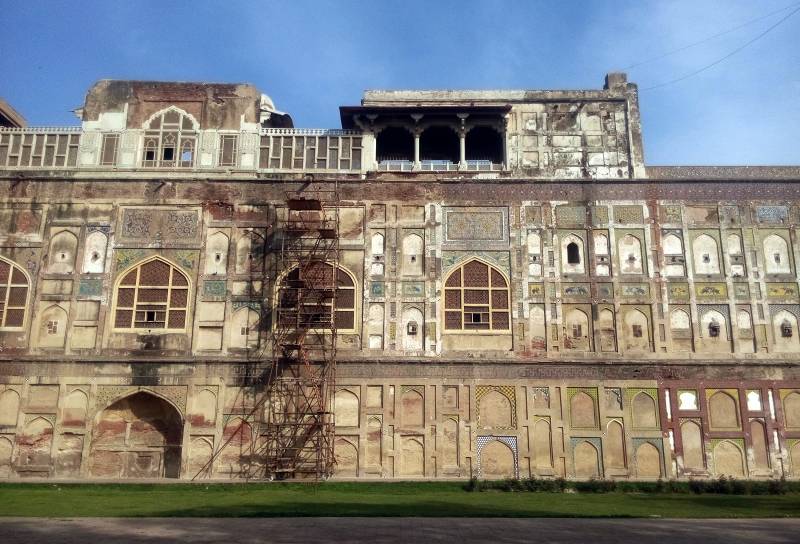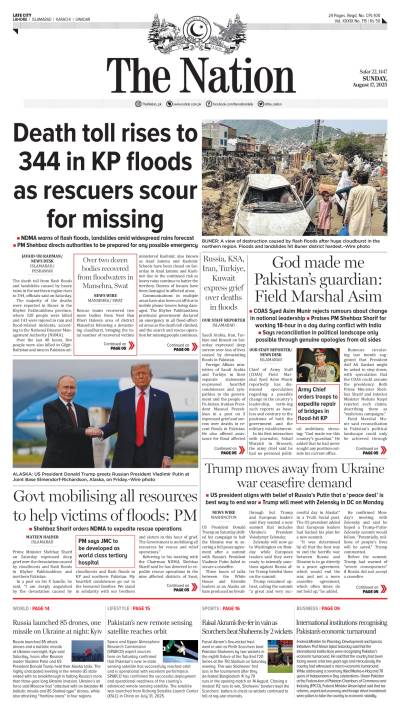LAHORE: After years of neglect Picture Wall of the Lahore Fort – the largest mural of its kind in the world would be restored to its original glory. Architectural survey and documentation is underway to make the work plan.
Eighty percent of the ongoing work has been completed and by end of June this year, the assigned team of Agha Khan Trust for Culture Pakistan (AKCS-P) would publish a comprehensive report after which preservation and restoration work would start.
The architectural survey is being conducted by AKCS-P in collaboration with Walled City of Lahore Authority (WCLA) with the support of Norwegian Embassy.
Documentation work on the 1,450 ft long Picture Wall also called exterior wall with an average height of 50 ft, that lies from north to west, started on September 1st of 2015, under ‘Lahore Fort Picture Wall, documentation, presentation and promotion’ project with the aim to complete the task within one year or less. It runs from Elephant Gate (Hathi Pol Gate) to Jahangir’s Quadrangle of Lahore Fort.
With continuous work of gathering and collecting each and every detail of 1974 ’panels’ or units assigned for the research, as called by Project Architect Sohaib Muhammad, said since eight months have passed they were determined to publish and submit a through and comprehensive report on the Picture Wall.
“The remaining western side of 350 ft would be preserved in the same manner,” Sohaib said.
The Picture Wall has 116 mosaic pictures, depicting life and style of Mughal emperors, pictures of animals, birds, battles, hunting of deer with hounds and the dance and music of the royal court. It is in fact the only Moghul building that has images of dragons, which were never thought to be in the imagination of people of sub-continent but of China and countries of Pacific Rim. All the images on the wall tell The Picture Wall contained world’s fresco tiles, mosaic paintings, and made up of the base of terracotta which could be rarely found elsewhere.
It is pertinent to mention here, Picture Wall was the reason behind inclusion of Lahore Fort into World Heritage Monument in 1981 by Unesco.
Site engineer Tanveer Johar said 3D laser scanners are being used for the first time to conduct the study while, ‘total station’ an electronic measuring device is also being used to examine the minute details of Picture Wall.
The local chapter of Geneva based Aga Khan Trust for Culture works with the name ‘Aga Khan Cultural Service Pakistan’ and has previously restored many historical and heritage sites including ongoing restoration work in Mosque Wazir Khan and old forts in Gilgit Baltistan.
WCLA Director General Kamra Lashari told The Nation that previously considered a dead spot of Lahore Fort now it would glitter in the eyes of tourists locally and globally once documentation study would complete on which recommendations would be made to preserve the rare beauty of our heritage. “WCLA is determined to change the Picture Wall into a worth sightseeing spot with the help of Agha Khan Trust for Culture”, Lashari maintained.
“The documentation study would be used to document the façade, to record the damage pattern, cause of decay, later interventions, and a condition survey of present material and to establish original construction techniques”, WCLA spokesperson Tania Qureshi said.
“After completion of the study, we will share all the technical, historical, cultural and aesthetic findings with educational institutions through workshops, to create awareness about the rich heritage,” she said.









